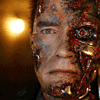
WaspyGorilla
Possible causes include memory, power or driver issues (examples only).
Please provide information about your computer, this includes is it a notebook or desktop, is it a custom build or brand name such as Dell or HP, if it is provide the model name or series number (not serial) providing these details will enable others to better assist you.
Please run whocrashed (free version) then copy - paste the results + conclusion only into your next reply
http://www.resplende...com/whocrashed/Next download
Windows Memory Diagnostic,
Save it to somewhere you will remember.
Preparation After downloading the tool, run it and accept the EULA.
You will be asked to either make a floppy disk or create a CD image.
If you want to use a floppy disk, insert a floppy disk and hit the top button.
If you want to use a CD then hit the bottom button and save the 'windiag.iso' to a place you can remember.
Once you have saved the 'windiag.iso' you will have to burn it to disk, a good program to use is ISO Recorder.
Starting the Diagnostics Now you should have the CD burnt or the floppy created. The next step will be to run the diagnostics.
Insert your CD or floppy and reboot the computer. You should get prompted to boot from the CD or floppy.
If you didn't get prompted to boot from CD or floppy you will have to change the Boot Order in the BIOS so that CD or floppy comes before the hard drive.
The Results Once the Diagnostics start running, let it run for about 4 full passes. Preferably overnight.
When the scan has done 4 full passes, or an overnight scan, look at the bottom of the screen.
The bottom of the screen will indicate if any errors have been found.
If errors have been found please check how many under the "results" part of the bottom table.
You can then reboot your machine by pressing the 'X' key.
Please report back with your findings.
















 Sign In
Sign In Create Account
Create Account

